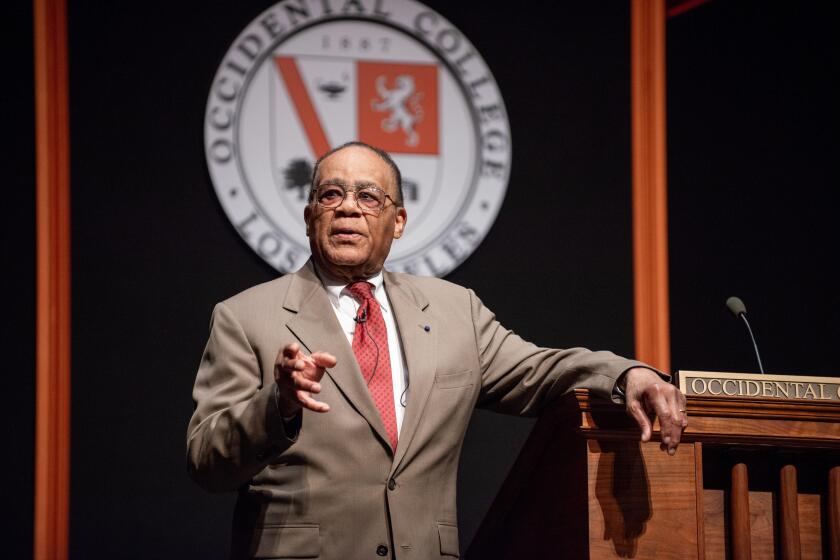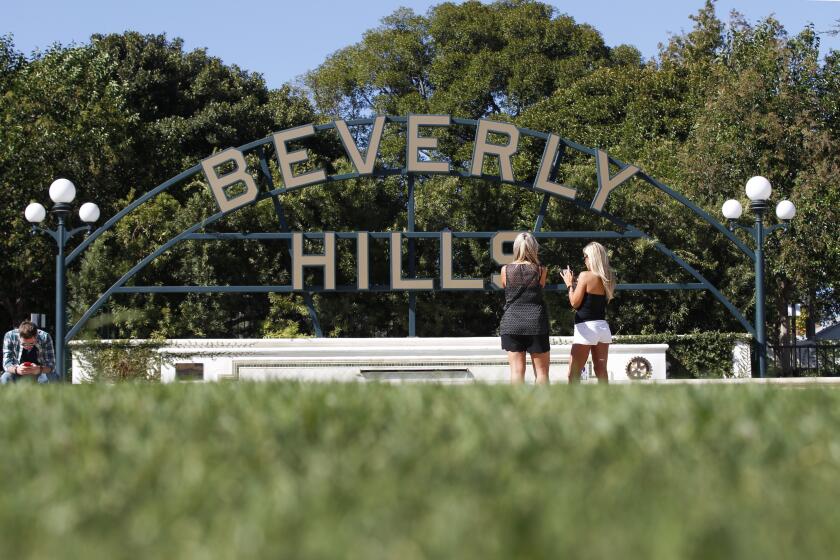How the Los Angeles Times uncovered the George Tyndall scandal

On Monday, the Los Angeles Times won the Pulitzer Prize for investigative reporting for articles that exposed Dr. George Tyndall, the USC gynecologist accused of sexually abusing hundreds of students. Below are excerpts from the entry The Times submitted for consideration.
How did the story come to light?
In early February 2018, investigative reporter Harriet Ryan received a call from a blocked number. The caller told Ryan, who had worked with colleagues on USC investigations, to look into Dr. George Tyndall, a gynecologist who had retired recently after many years at the student health clinic.
The caller refused to provide a name, specific details about Tyndall or even a callback number. Intrigued, Ryan and another reporter, Matt Hamilton, began searching public records for information suggesting Tyndall was a problem doctor. They found nothing.
Undaunted, they compiled a list of current and former clinic employees using LinkedIn and archived staff directories. Then they started knocking on doors and asking about Tyndall.
It became clear that many people had troubling information about the gynecologist and that most of them were too afraid of losing their jobs to share it. The truth won’t matter anyway, the reporters were told repeatedly. USC will just cover it up.
Ryan, Hamilton and a third colleague, Paul Pringle, kept knocking on doors, and over a period of months, they persuaded more than 20 current and former USC employees and a handful of former patients to talk on an anonymous basis. The story they told was jaw-dropping. In his 27 years at the clinic, Tyndall had been accused repeatedly of misconduct toward female students, including photographing their genitals during appointments, performing inappropriate pelvic exams and making suggestive remarks about their bodies.
It wasn’t until 2016, when a frustrated nurse went to the rape crisis center, that administrators forced Tyndall out. Even then, USC lawyers provided him with a secret exit package that allowed him to depart quietly with a financial payout and a clean record from the Medical Board of California.
Armed with the anonymous accounts, Ryan and Hamilton confronted first Tyndall, who sat for 10 hours of interviews, and then USC administrators.
What obstacles, if any, were overcome in this work?
USC is a private institution and not beholden to public-records laws, posing a challenge to reporters trying to uncover its internal affairs. Persuading employees to speak to reporters was also a significant obstacle, with many clinic employees and administrators citing potential retaliation and even job loss. As an employer, USC offers an exceptional retirement and health insurance package, and employees are eligible to secure free tuition for themselves and their children — perks that few want to jeopardize. The university does not have labor unions among its workforce.
To identify key employees to approach as sources, reporters used archives of employee directories, LinkedIn and a roster obtained from USC’s internal human resources platform. Approaching current and former staff at the university or their current job was ruled out as too risky. Instead, reporters visited their homes during evenings and weekends and traveled across the state to engage key sources in person.
Uncovering specific details about Tyndall’s alleged misconduct was also complicated by confidentiality statutes. Complaints lodged with the state medical board are not subject to public-records laws. In addition, the concerns reported to and discussed by the campus clinic’s peer review body were shielded by confidentiality agreements. Further, the experiences of patients at USC’s clinic and their identities were also protected by the federal Health Insurance Portability and Accountability Act — which presented another layer of risk to sources and a barrier to obtaining accurate information.
How is this work distinguished from previous or competing reporting on this subject?
Unlike similar stories about sexual abuse, our investigation did not have the benefit of police records, court filings or other public documents because none existed. It was based almost exclusively on interviews.
What has been the impact of the stories?
USC is the most important private institution in Los Angeles, responsible for more than 53,000 jobs and exercising significant influence in the region’s politics, healthcare and economic development.
How the university is run is critically important to the public, and The Times’ investigation resulted in profound improvements to the institution’s ethics. It triggered local, state and federal investigations and allowed hundreds of women to seek justice and financial compensation for sexual abuse they say they suffered at USC.
A task force of a dozen police detectives interviewed alumnae around the country, part of the largest-ever LAPD sex crimes investigation with a single suspect. Detectives subsequently referred more than 100 cases to the district attorney. A grand jury is currently hearing evidence.
The state medical board launched an investigation and is trying to strip Tyndall of his license to practice. The U.S. Department of Education opened a probe into whether USC concealed evidence from regulators during a prior federal inquiry into the university’s handling of Title IX complaints. More than 650 women filed suit against USC, alleging the university failed to protect them from sexual abuse. In October 2018, USC agreed to pay $215 million to resolve a federal class-action suit, which will have to be approved in court. That would be the first in what is expected to be a wave of settlements. USC’s president resigned, and trustees pledged a wholesale reboot of what they described as a broken culture at the institution. They named a woman as interim president and held listening sessions to understand what students want in a new president. USC’s long docile faculty has been reborn as a feisty group dedicated to holding administrators accountable.
This summer, the university alerted federal prosecutors to a suspicious money transfer involving a dean and a powerful local politician, a move USC said was motivated by its new commitment to transparency and ethics.
Were there any substantive challenges to the accuracy or fairness of the work?
Tyndall and his attorneys have denied that the physician abused or sexually harassed patients during his career, and their comments were included in our stories. Tyndall told the newspaper, in a letter criticizing the coverage, that patients sometimes fabricate stories. The Times quoted extensively from his letter in our published stories. No corrections or clarifications were published in connection with any of the work.
Start your day right
Sign up for Essential California for news, features and recommendations from the L.A. Times and beyond in your inbox six days a week.
You may occasionally receive promotional content from the Los Angeles Times.


